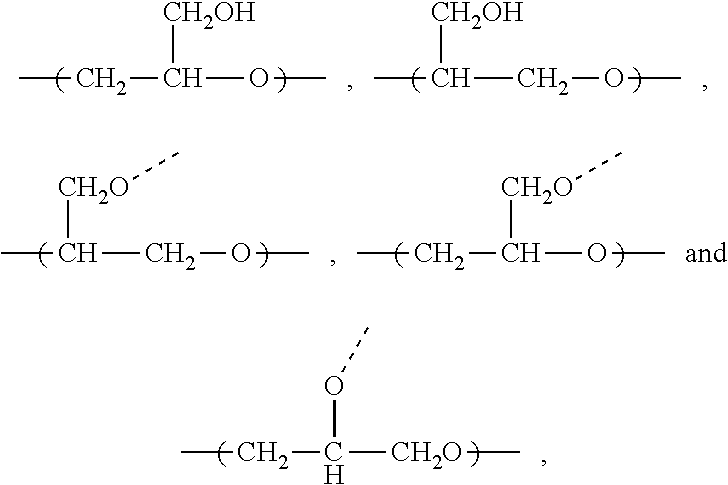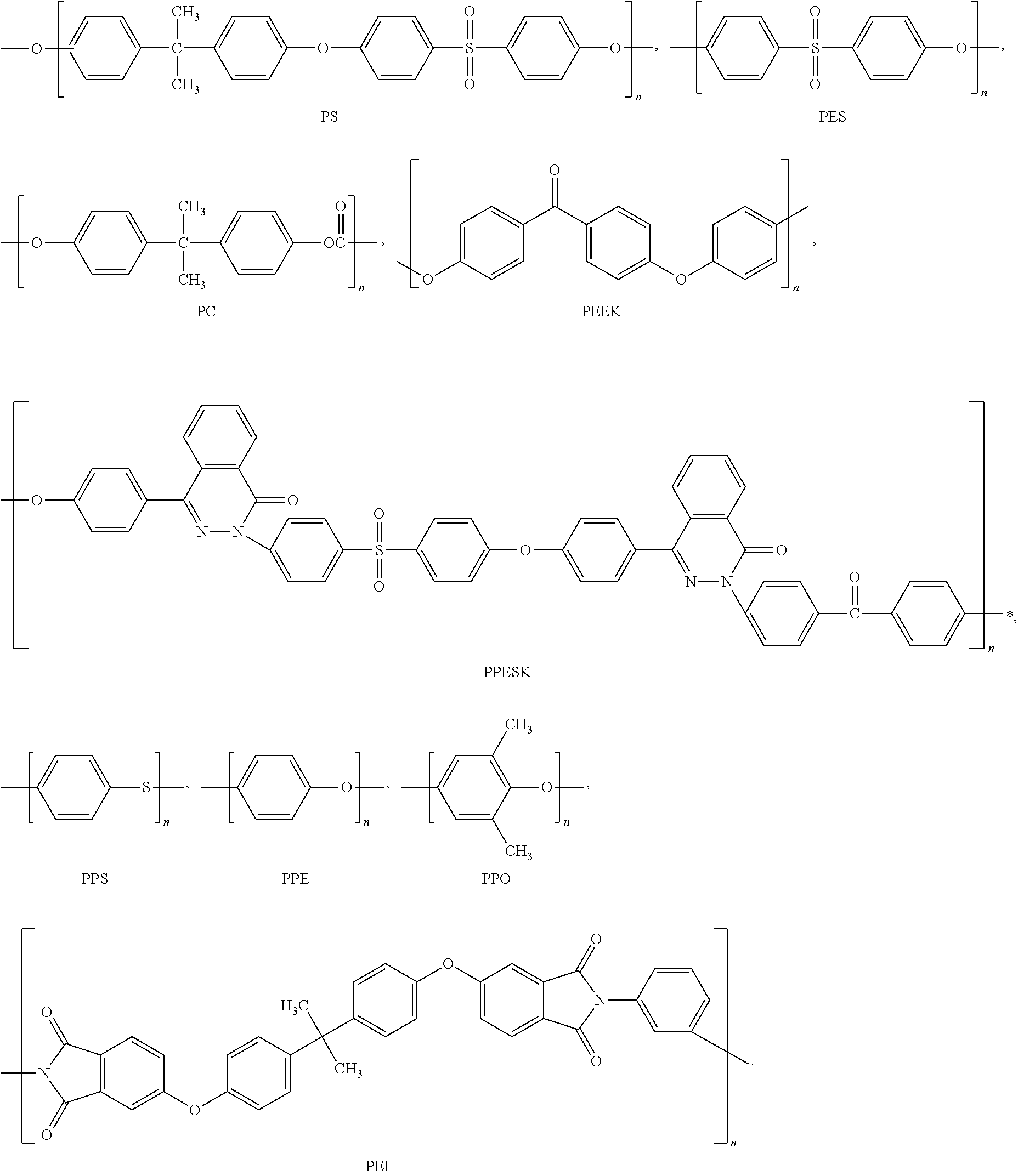Hydrophilic membranes and method of preparation thereof (IV)
a technology of hydrophilic membranes and membranes, applied in membrane technology, membrane technology, chemistry apparatus and processes, etc., can solve the problem of low extractable content of porous membranes prepared using block copolymers, and achieve the effect of strong adhesion and low extraction conten
- Summary
- Abstract
- Description
- Claims
- Application Information
AI Technical Summary
Benefits of technology
Problems solved by technology
Method used
Image
Examples
example 1
[0084]This example illustrates the preparation of a block copolymer comprising polyethersulfone segment as block B and a copolymer of glycidol and allyl glycidyl ether as block A, for preparing hydrophilic porous membranes in accordance with an embodiment of the invention.
[0085]BASF ULTRASON™ E6020 (500 g) polyethersulfone was added slowly to DMAc (1.5 L) in a 3 L reactor fitted with an overhead stirrer at 110° C. After complete dissolution of the polymer, K2CO3 (12.5 g) was added. After additional 2.5 hrs of stirring at 110° C. a mixture of allyl glycidyl ether (400 mL) and glycidol (100 mL) were added, and the reaction mixture stirred at 110° C. for 12 hours. The hot reaction mixture was added slowly to vigorously stirred distilled water (15 L). The product obtained was filtered, and further stirred in ethanol (5 L) overnight. The precipitate was filtered, washed with ethanol (2 L) and dried in a vacuum oven at 50° C. overnight to yield 760 g of the block copolymer product (PES-Pg...
example 2
[0086]This example illustrates the preparation of another block copolymer comprising polyethersulfone segment as block B and a copolymer of glycidol and allyl glycidyl ether as block A, for preparing porous membranes in accordance with an embodiment of the invention.
[0087]Sumitomo 5003PS (200 g) polyethersulfone was added slowly to DMAc (0.5 L) at 110° C. After complete dissolution of the polymer, K2CO3 (12.5 g) was added. After additional 2.5 hrs of stirring at 110° C. a mixture of allyl glycidyl ether (160 mL) and glycidol (40 mL) were added, and the reaction mixture stirred at 110° C. for 12 hours. The hot reaction mixture was added slowly to vigorously stirred distilled water (7 L). The product obtained was filtered, and further stirred in ethanol (1.5 L) overnight. The precipitate was filtered, washed with ethanol (0.75 L) and dried in a vacuum oven at 50° C. overnight to yield 260 g of the block copolymer product, PES-Pg / PolyAGE, with 57 mol % of PES and 43 mol % of block A co...
example 3
[0088]This example illustrates the preparation of a block copolymer comprising polyethersulfone segment as block B and a copolymer of glycidol and allyl glycidyl ether where one or more allyl groups have been replaced with a hydrophilic group, constituting block A, PES-Pm-MEA, for preparing porous membranes in accordance with an embodiment of the invention.
[0089]30 g of PES-Pg / PolyAGE from Example 1 was dissolved in DMAc (100 mL) at 80° C. After complete dissolution of the polymer, the solution was purged with nitrogen for 5 minutes. Aminoethanethiol hydrochloride (3 g) and 2,2′-azobis(2-methylpropionamidine)dihydrochloride (50 mg) were added and the reaction mixture was stirred at 80° C. for 21 hours. The hot reaction mixture was precipitated by drop-wise addition to ethanol (750 mL). The resulting precipitate was reconstituted in ethanol (250 mL) and further stirred for 2 hours. The resulting precipitate was filtered and dried in a vacuum oven at 50° C. overnight to yield 32 g of ...
PUM
| Property | Measurement | Unit |
|---|---|---|
| mol % | aaaaa | aaaaa |
| mol % | aaaaa | aaaaa |
| temperature | aaaaa | aaaaa |
Abstract
Description
Claims
Application Information
 Login to View More
Login to View More - R&D
- Intellectual Property
- Life Sciences
- Materials
- Tech Scout
- Unparalleled Data Quality
- Higher Quality Content
- 60% Fewer Hallucinations
Browse by: Latest US Patents, China's latest patents, Technical Efficacy Thesaurus, Application Domain, Technology Topic, Popular Technical Reports.
© 2025 PatSnap. All rights reserved.Legal|Privacy policy|Modern Slavery Act Transparency Statement|Sitemap|About US| Contact US: help@patsnap.com



